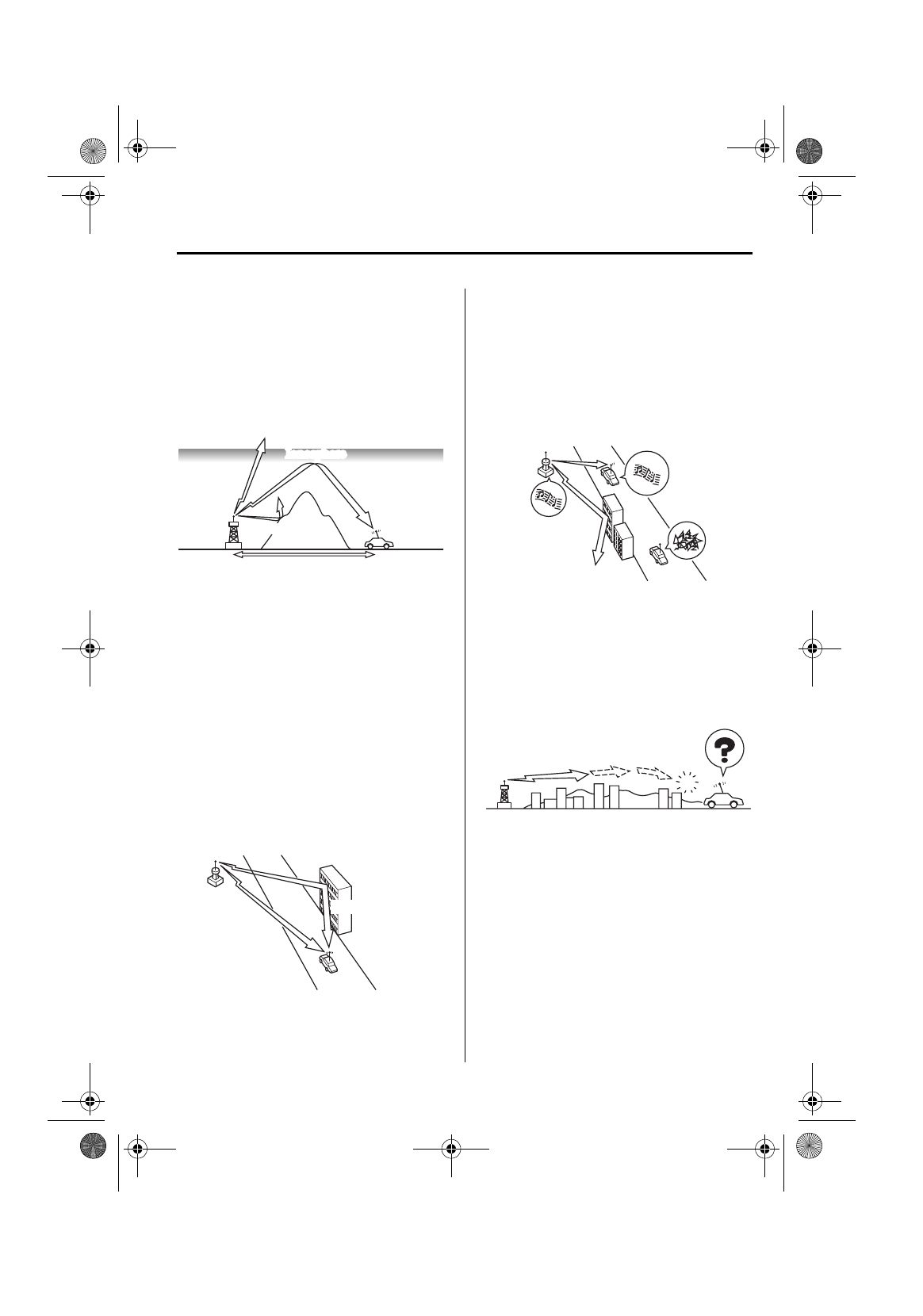
6-11
Interior Comfort
Audio System
Form No. 8R09-EA-02G
Signals from an FM transmitter are
similar to beams of light because they do
not bend around corners, but they do
reflect. Unlike AM signals, FM signals
cannot travel beyond the horizon.
Therefore, FM stations cannot be received
at the great distances possible with AM
reception.
Atmospheric conditions can also affect
FM reception. High humidity will cause
poor reception. However, cloudy days
may provide better reception than clear
days.
Multipath noise
Since FM signals can be reflected by
obstructions, it is possible to receive both
the direct signal and the reflected signal at
the same time. This causes a slight delay
in reception and may be heard as a broken
sound or a distortion. This problem may
also be encountered when in close
proximity to the transmitter.
Flutter/Skip noise
Signals from an FM transmitter move in
straight lines and become weak in valleys
between tall buildings, mountains, and
other obstacles. When a vehicle passes
through such an area, the reception
conditions may change suddenly,
resulting in annoying noise.
Weak signal noise
In suburban areas, broadcast signals
become weak because of distance from
the transmitter. Reception in such fringe
areas is characterized by sound breakup.
Ionosphere
100—200 km (60—120 miles)
FM wave
FM wave
AM wave
Direct
Reflected wave
J07R_8R09_EA_02G.book Page 11 Monday, July 1, 2002 11:30 AM


















